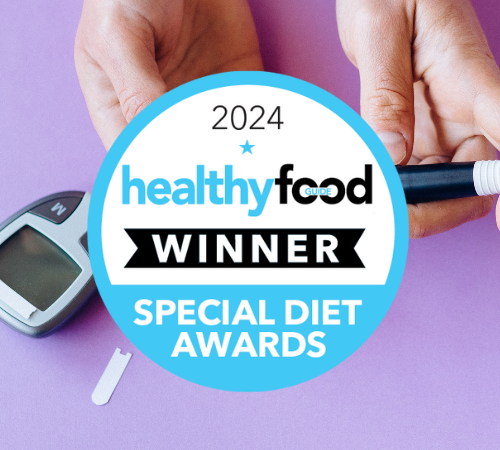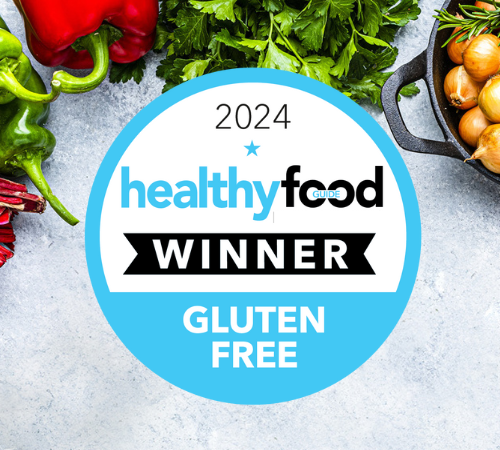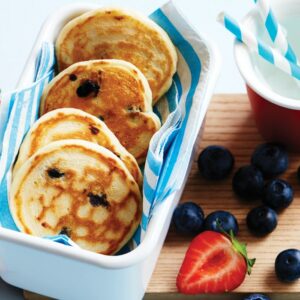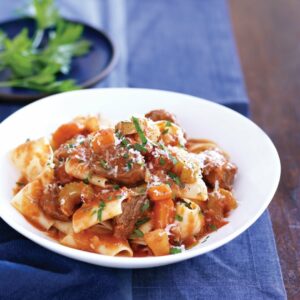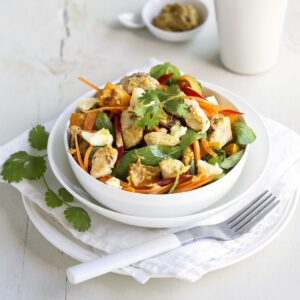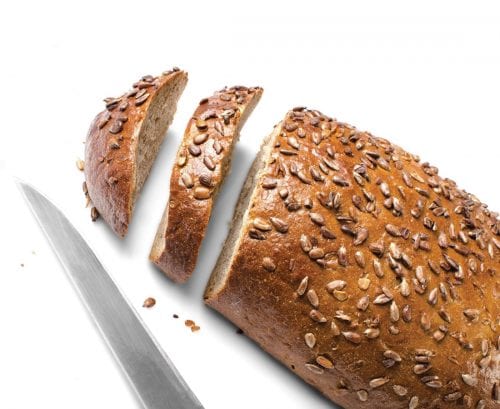
Being the ultimate pantry staple, we want to ensure we choose the right type of bread to benefit from an important source of dietary fibre.
Nowadays, choosing bread is more than just ‘white or wholemeal’. Our choices now include wholemeal, wholegrain, multigrain, seeded, wheatmeal and white, along with paleo, gluten-free and low-carb options. There are also different thicknesses of bread slices — very thin, sandwich, toast and super thick.
There is voluntary fortification of bread with folic acid to help reduce the risk of neural tube defects during pregnancy, so check the ingredients list to see if it is fortified.
Some breads can be high in vitamins and minerals because of the seeds and grains.
The packaging states a serving size for bread is two slices and, depending on the amount of grains and thickness, this varies from around 40g to over 110g.
Most bread weighed in at 75g–85g per serve, mainly determined by slice size, although bread with lots of grains and seeds tends to be heavier.
Energy
Bread is high in carbohydrates, one of the three main macronutrients that give us energy. Most of the bread we found provided around 600kJ– 900kJ for two slices. The lowest energy we found was 437kJ for two slices and 1200kJ the highest.
Choosing wholegrain bread with plenty of visible seeds and grains means getting the benefit of slower-release energy, helping to fill us up.
Fibre
Bread can be a good source of wholegrain fibre if we make the right choice. Fibre is important to help maintain bowel health, prevent constipation and grow good gut bacteria. It can also help slow energy release which controls blood sugar and can improve heart health by reducing cholesterol levels. The suggested dietary target (SDT) per day for fibre is 38g for men and 28g for women. We found white, wheatmeal and multigrain to be the lowest fibre bread, while bread with visible seeds and grains were the highest. Look for these words early in the ingredients list: barley, brown rice, granary, kibbled (grain), millet, mixed grain, multigrain, oats, rye, seeded, stoneground (grain), whole grain, whole wheat and seeds.
We recommend choosing bread with 7g or more fibre per 100g. But if this is too restrictive choose more than 5g fibre per 100g.
Sodium
Bread can be an unexpectedly high source of sodium in our diet. The daily recommended upper limit for sodium is 2000mg for adults. We found most bread contained around 250mg–350mg sodium per serve. The highest amount of sodium we found was 445mg per serve. A high intake of sodium puts us at greater risk of high blood pressure, a risk factor for heart disease.
We recommend choosing bread with 400mg or less sodium per 100g.
Iodine in bread
Iodine has been added to much of our salt since 1924 to prevent iodine deficiencies. Since 2009 it has been mandatory for manufacturers to use iodised salt in most breads, after studies found mild to moderate iodine deficiencies were being seen again. However, organic, unleavened and pizza breads don’t have to be fortified with iodine.
Some bread products we found:
Use these criteria to compare bread:
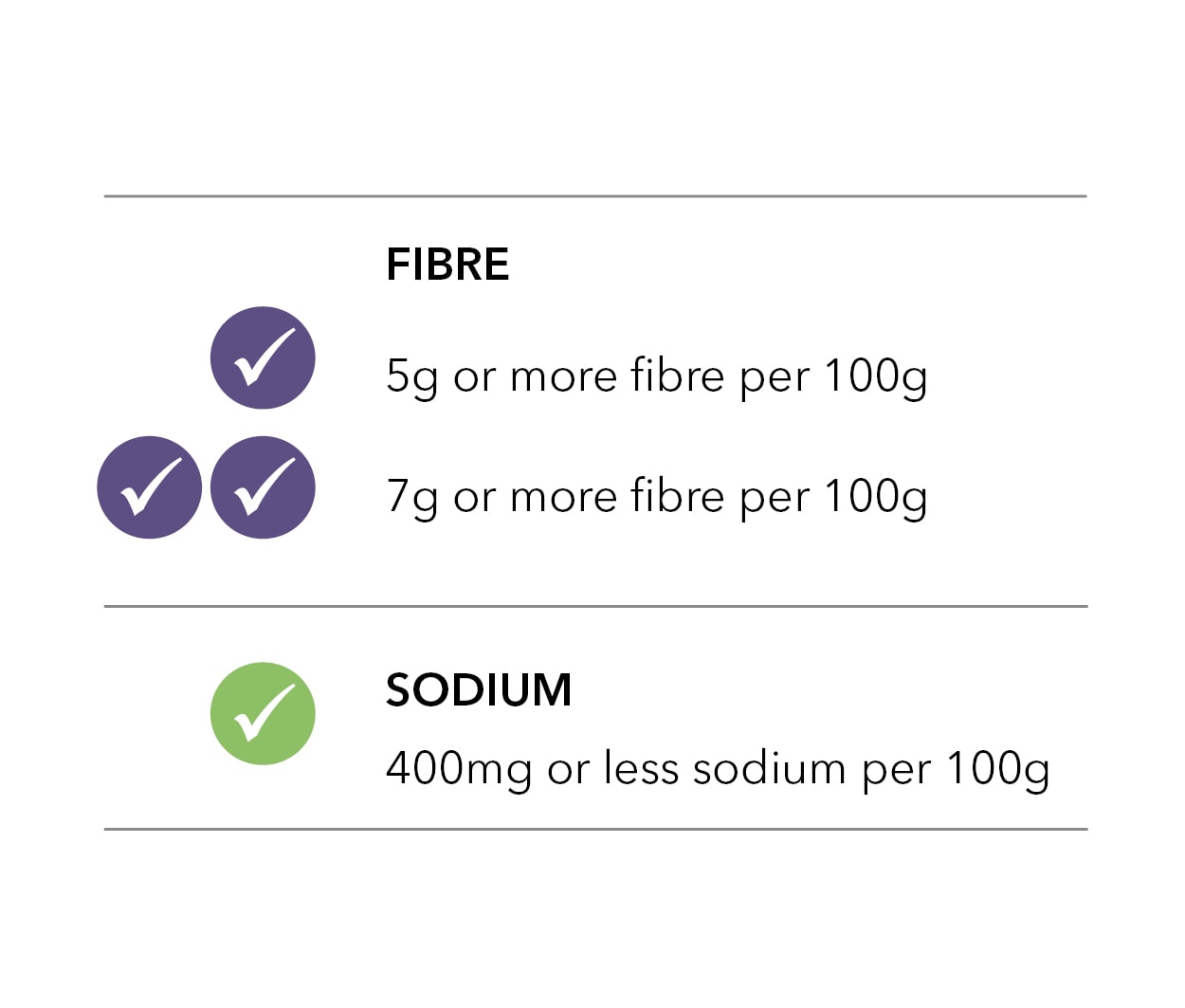
Any product examples given here were correct at time of publication. However, remember to check the ingredients and nutrition information every so often, as these can change over time
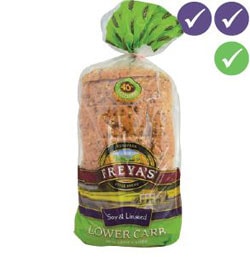
Lower Carb Soy & Linseed
$4.20 per 750g loaf
Per 100g: 1080kJ, 9.9g fibre, 350mg sodium, $0.56
Soft with chewy seeds.

Wholemeal & Seeds toast
$3.80 per 700g loaf
Per 100g: 1090kJ, 9.5g fibre, 360mg sodium, $0.54
Moist and nutty taste. Lots of seeds.
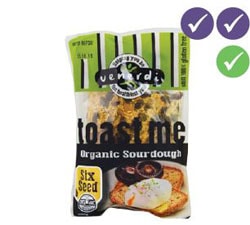
Toast Me Organic Sourdough Six Seed (gluten free)
$8.50 per 600g loaf
Per 100g: 1090kJ, 8.4g fibre, 253mg sodium, $1.42
Good for toast. Love the seeds on the outside.
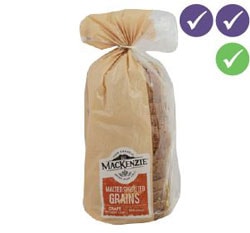
Malted Sprouted Grains Craft Settlers ™ Loaf
Cost $4.40 per 500g loaf
Per 100g: 1050kJ, 7.7g fibre, 355mg sodium, $0.88
Slight sourdough taste. Quite malty.
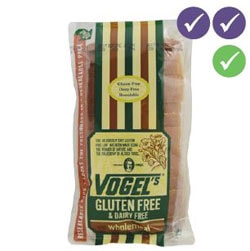
Gluten Free & Dairy Free Wholemeal
$7.49 per 580g loaf
Per 100g: 930kJ, 7.3g fibre, 380mg sodium, $1.29
Would be good for sandwiches.
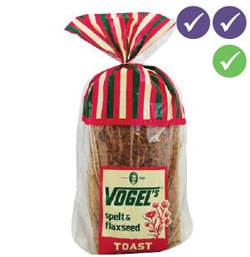
Spelt & Flaxseed toast
$3.99 per 720g loaf
Per 100g: 1010kJ, 7.3g fibre, 370mg sodium, $0.55
Deliciously crunchy with the flax seeds.

Wholemeal & Grains
$3.30 per 750g loaf
Per 100g: 944kJ, 7.2g fibre, 395mg sodium, $0.44
A nice simple, fluffy bread.
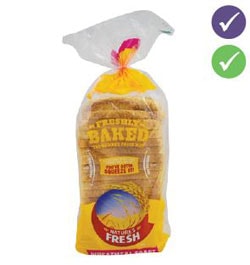
Wheatmeal toast
$3.00 per 700g
Per 100g: 1030kJ, 5.9g fibre, 380mg sodium, $0.43
A soft and pleasant slice.
Aim to make your daily bread dense with visible grains.
Article sources and references
- National Health and Medical Research Council, Australian Government Department of Health and Ageing, New Zealand Ministry of Health. 2006. Nutrient Reference Values for Australia and New Zealand. Canberra: National Health and Medical Research Council, nrv.gov.auhttps://www.nrv.gov.au/
- Ministry for Primary Industries. Folic acid fortification of bread - voluntary standard, mpi.govt.nz Accessed June 2019https://www.mpi.govt.nz/processing/food-and-beverages/food-and-beverage-manufacturing-requirements/bakery-and-grain-based-product-processing/folic-acid-fortification/
- Ministry for Primary Industries. Iodine fortification of bread and bread products, mpi.govt.nz Accessed June 2019https://www.mpi.govt.nz/processing/food-and-beverages/food-and-beverage-manufacturing-requirements/bakery-and-grain-based-product-processing/iodine-fortification/
www.healthyfood.com


